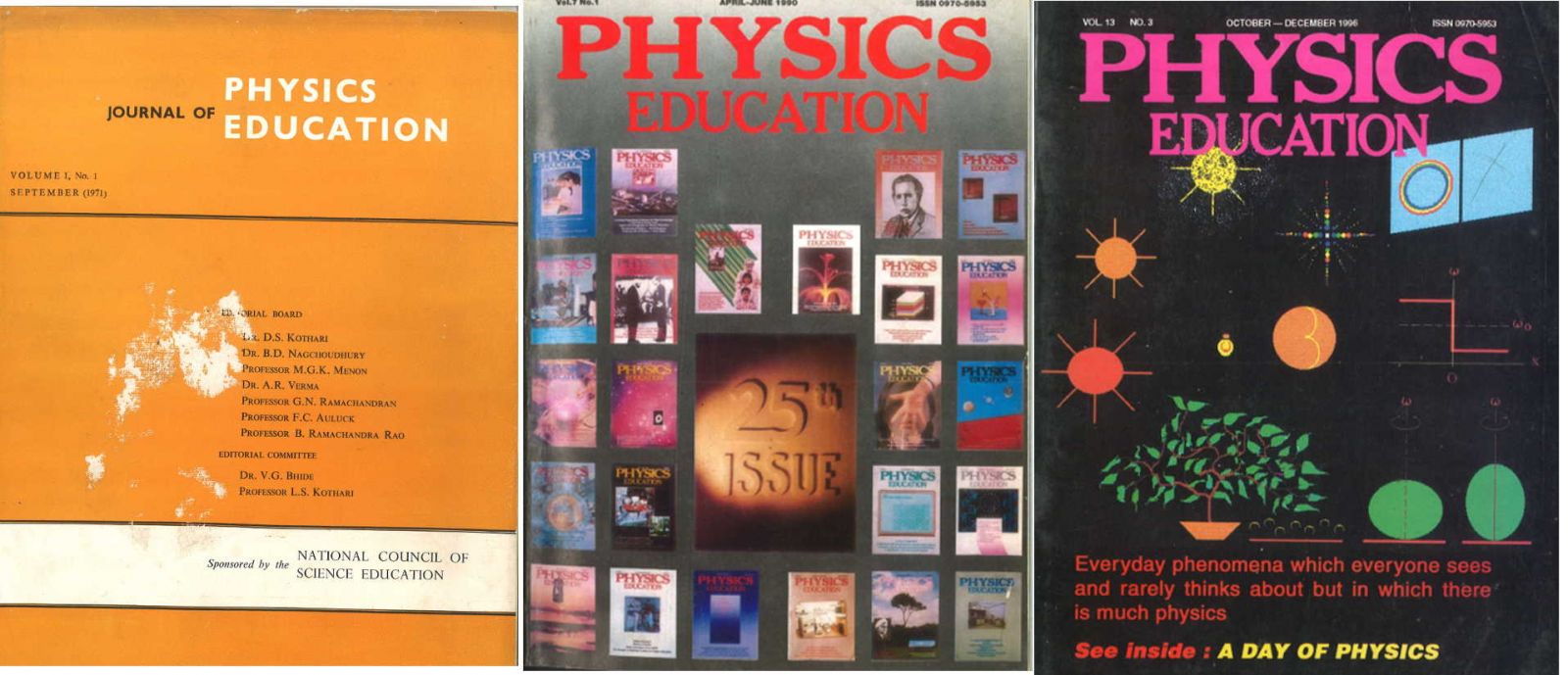Physics Education is a journal with history dating back to 1984. Its present chief editor M. S. Santhanam, looks at the history of Physics Education during the era when it was a printed journal.

Going beyond the physics matters, occasional editorials, such as the one by Dr. S. V. Lawande in the April-June 2001 issue discussed the deep recession in the IT industry and warned that 'IT education has so far been mainly on training people to make it easier for them to get H1-B visa to US. Over-dependence on this is simply not a great idea'.
Physics Education was started in the year 1984 by a group of eminent physicists largely based in and around Pune. In 1971 Journal of Physics Education came into existence and ran for a few years before shutting down. Physics Education began its life as a print journal as those were the times when the internet was not even born and even computers had just begun to enter India's research labs. From 2001 onwards, it is being published in collaboration with the Indian Association of Physics Teachers. Almost from 2005 onwards, the journal is financially supported by the Board of Research in Nuclear Sciences, Department of Atomic Energy, Government of India. Prior to this, the journal received support from University Grants Commission, Indian Space Research Organisation and Pune University.
In 1990, as the journal celebrated its 25th issue, the first and the then editor Professor Arun Nigavekar of Pune university's physics department had this to say in the editorial; "This is the twenty-fifth issue of our journal Physics Education. Twenty five is certainly not a big number in the life span of a journal. However, in a country like India where support and acceptance of journals devoted to education, science and technology is so limited, mere survival for six years could itself be counted as a milestone". Clearly, as we step into 34th year of publication, having published in print format for 28 years and 6 years as online journal, we have more reasons to feel happy about. With this issue, we have revamped the online presence of Physics Education with new added features. We hope that the new features will have strong resonance with the readers of Physics Education.
One of the new features is the 'web specials' which will be articles at the interface of physics and everything else. Some of these could be opinion articles. Constructive criticism of science policies in India or comparison with other nations or commentary on the culture of physics used to be oft-repeated theme in the print version of the journal until 2012. In a sense, the 'web specials' section is restoring the spaces available for constructive discussion processes, the space that seemed to have evaporated after the journal went online in 2012.
For instance, the October-December issue in 1998 had a guest editorial titled 'Biophysics in India needs more attention' written by Prof. A. S. Kolaskar of Pune University and it argued that 'for biotechnology to develop in this country, good biophysicists should become part of the development process'. Another editorial in July-September 2004 issue bemoans the lack of correct and creative physics questions in the examinations administered by the various universities. It said that the situation is a result of 'unconstrained expansion of higher education and its commercialization, quality of it is a first casuality'. The omniously titled 'Decline of physics in India', an editorial by Prof. P. V. Panat in the issue in July-September 2002, points out that over a period from 1980 to 2000, India is the only country whose papers actually saw a drop in numbers, while all other major developing countries saw an increase. It goes on to say that 'in spite of rise in expenditure from Rs. 761 crores to Rs. 13000 crores, scientific output is decreasing'.
Going beyond the physics matters, occasional editorials, such as the one by Dr. S. V. Lawande in the April-June 2001 issue discussed the deep recession in the IT industry, reflecting the present scenario as well, and goes on warn that 'IT education has so far been mainly on training people to make it easier for them to get H1-B visa to US. Over-dependence on this is simply not a great idea'. Quite by coincidence, in 2017, IT industry in India is learning the same moral lessons all over again. Over the years, the print version of the journal had published interesting opinions on a variety of physics related topics.
The 'web specials' introduced from this issue onwards will continue this trend of informed debate but also expand in to wider areas that have interface with physics and society.
Not to forget, the core of Physics Education will always be about physics based articles; intelligent, creative and interesting to a broad physics audience of teachers, students researchers.
M. S. Santhanam is an associate professor of physics at IISER Pune and is the chief editor of Physics Education.


